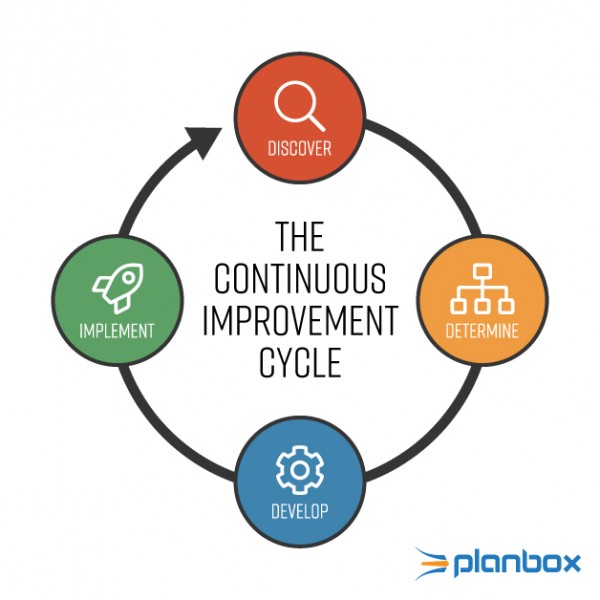What is Continuous Improvement?
Discover why world-leading organizations are adopting this remarkably powerful practice.
What is Continuous Improvement?
Continuous Improvement is a framework for organizations to discover new opportunities, streamline workflows and eliminate wasted resources by constantly re-examining and improving their products, services and processes. Continuous Improvement can materialize either over time via incremental improvement, or all at once via breakthrough improvement. For all intents and purposes, Continuous Improvement simply means getting better, all the time.
Organizations worldwide are adopting and integrating Continuous Improvement as an ongoing, proven effort to generate new revenue opportunities while simultaneously reducing unnecessary expenses incurred throughout all business activities. Using Continuous Improvement software, results are achieved through a cyclical and methodical framework that involves problem discovery, cross-functional collaboration, analysis, and solution development.
Continuous Improvement is not a one-off change initiative. Rather, it is a framework, a practice and a culture that shapes the way an organization thinks, operates, and decides, with a specific and ongoing focus set on employee engagement and company growth.
Kaizen Methodology
Continuous Improvement is a core principle of the Kaizen methodology. Translated from Japanese, Kai (meaning ‘change’) and zen (meaning ‘good’) means ‘good change’ or, in other words, improvement. This approach is used as a flexible process through which feedback, efficiency and evolution constitute the primary principle, purpose and emphasis, respectively, of the Continuous Improvement Cycle.
How Continuous Improvement Works
Continuous Improvement works by requiring and encouraging cross-functional collaboration at every level of an organization throughout the improvement cycle (feedback). Also known as crowdsourcing, obtaining input such as ideas, comments and suggestions from employees on an ongoing basis maximizes the potential for problem discovery and solution development (efficiency), which ultimately supports continued company growth and success (evolution).
The Benefits of Continuous Improvement
Continuous Improvement allows organizations to identify fundamental problems and implement winning solutions in an ongoing manner. Making small, positive changes over time can drastically improve an organization’s overall method of operation. Below are just a few ways in which your business can benefit from the Continuous Improvement model.

